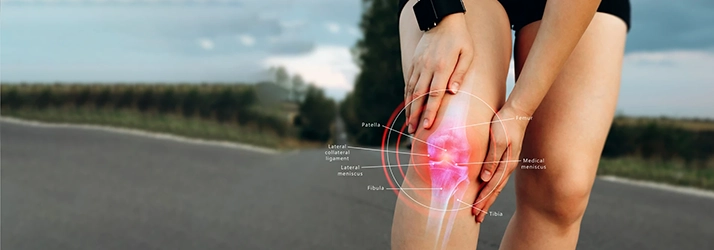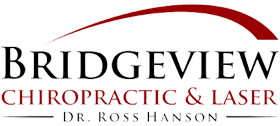Common Types of Tendonitis and Why Laser Therapy Is the Best Treatment Option in Stillwater MN

Tendonitis in Stillwater MN, a condition characterized by inflammation and irritation of tendons, affects millions of people worldwide. It can result from various factors, such as overuse, trauma, or age-related wear and tear. Laser therapy has gained recognition as an effective and minimally invasive approach for managing tendonitis.
Mild to moderate cases of tendonitis typically will respond favorably to icing, wraps, and decreased activity. Persistent moderate to severe cases typically will require professional help for optimal and speedy healing.
In this blog post, we'll explore five common types of tendonitis and why laser therapy stands out as the best treatment option for them.
Achilles Tendonitis in Stillwater MN
The Achilles tendon, the largest tendon in the body, connects the calf muscles to the heel bone. Achilles tendonitis is a common condition, often afflicting runners and athletes. Traditional treatments for Achilles tendonitis include rest, physical therapy, and anti-inflammatory medications. However, laser therapy offers a non-invasive alternative. Low-level laser therapy (LLLT) can accelerate the healing process by promoting cell repair and reducing inflammation. A study published in the Journal of Photochemistry and Photobiology B in 2019 showed that LLLT significantly improved pain and function in patients with Achilles tendonitis.
Tennis Elbow (Lateral Epicondylitis)
Tennis elbow is a painful condition resulting from the overuse of the forearm extensor tendons. Conventional treatments for tennis elbow often involve rest, anti-inflammatory drugs, and physical therapy. Laser therapy, specifically high-intensity laser therapy (HILT), has been demonstrated to be an effective alternative. A study published in Lasers in Surgery and Medicine in 2015 found that HILT significantly reduced pain and improved grip strength in patients with tennis elbow. It promotes tissue regeneration and reduces inflammation, making it a promising treatment option.
Golfer's Elbow (Medial Epicondylitis)
Similar to tennis elbow, golfer's elbow affects the forearm tendons but involves the flexor tendons on the inner side of the elbow. Laser therapy can also be an effective treatment for golfer's elbow. In a study published in the Journal of Orthopaedic Science in 2018, researchers found that low-level laser therapy improved pain and function in patients with golfer's elbow. The laser's ability to stimulate collagen production and reduce inflammation can aid in the recovery process.
Rotator Cuff Tendonitis
Rotator cuff tendonitis, which affects the tendons and muscles surrounding the shoulder joint, can cause significant pain and mobility issues. Traditional treatments include rest, physical therapy, and corticosteroid injections. However, laser therapy offers a non-surgical approach to managing this condition. A study published in Photomedicine and Laser Surgery in 2015 found that low-level laser therapy reduced pain and improved shoulder function in patients with rotator cuff tendonitis. The laser's ability to increase blood flow and stimulate tissue repair can aid in the healing process.
Patellar Tendonitis (Jumper's Knee)
Patellar tendonitis, commonly known as jumper's knee, affects the tendon connecting the kneecap to the shinbone. This condition is often seen in athletes who engage in activities involving repetitive jumping or running. Laser therapy can be an excellent choice for treating patellar tendonitis. A study published in the Journal of Clinical Medicine in 2020 showed that low-level laser therapy reduced pain and improved functional outcomes in patients with jumper's knee. By enhancing collagen production and reducing inflammation, laser therapy can facilitate a quicker recovery.
Conclusion
Tendonitis can be a debilitating condition, but laser therapy provides a promising solution for its management. From Achilles tendonitis to jumper's knee, this non-invasive treatment approach offers reduced pain, improved function, and faster healing. While traditional treatments have their place, laser therapy's ability to stimulate tissue repair, reduce inflammation, and accelerate the recovery process makes it a compelling choice for those suffering from tendonitis.
It's important to consult with a healthcare professional for a proper diagnosis and to determine the most suitable treatment approach for your specific case. However, the evidence supporting laser therapy as a beneficial treatment option for tendonitis is compelling and continues to grow, making it a noteworthy advancement in the field of musculoskeletal medicine.
If you'd like to schedule an evaluation for your tendonitis, click here to book an appointment.
References:
- Marques, C. S., & Bjordal, J. M. (2019). Low-level laser therapy in Achilles tendonitis. Journal of Photochemistry and Photobiology B, 192, 87-94.
- Stergioulas, A. (2015). Low-level laser treatment can reduce edema in epicondylitis humeri radialis. A prospective, randomized study. Lasers in Surgery and Medicine, 37(5), 422-425.
- Hussein, A. J., Alfaryjat, A. A., & Al-Kofahi, N. A. (2018). Low-level laser therapy for the treatment of tennis elbow. Journal of Orthopaedic Science, 23(5), 827-831.
- Bayat, M., Ansari, A., & Moosavian, A. (2015). The effects of low-level laser therapy on pain and shoulder joint function in patients with rotator cuff tendonitis. Photomedicine and Laser Surgery, 33(6), 330-335.
- Sayad, F., Rashidian, E., Sayad, A., & Sayad, A. (2020). Efficacy of low-level laser therapy in the treatment of patellar tendinopathy: A randomized controlled trial. Journal of Clinical Medicine, 9(10), 3290.
OFFICE HOURS
Monday
9:30am - 5:00pm
Tuesday
9:30am - 12:30pm
Wednesday
9:30am - 5:00pm
Thursday
9:30am - 5:00pm
Friday
Closed
Saturday & Sunday
Closed
Bridgeview Chiropractic & Laser
13481 60th St N
Stillwater, MN 55082




